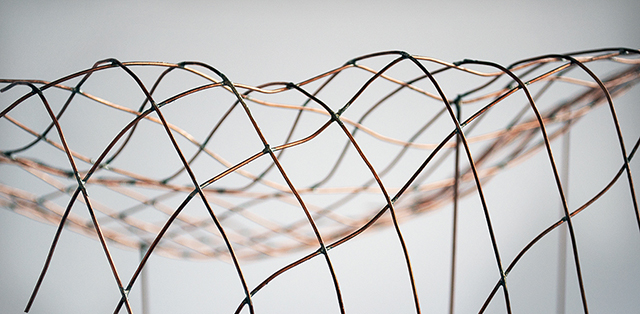

For some, architecture begins primarily through working within the logic of the material from which it is formed. Those adopting this approach find value in the capacity of a design to express the natural demands of the materials and processes that enable its realization, find beauty in the spatialization of these material demands, and find inspiration in a designer's ability to test the material system's limits. An elemental material, such as wood, glass, masonry or concrete, on its own may not provide enough guidance for designers working within this methodology. We must turn instead to tectonic material systems - that is, the paring of the properties of a material with the means through which it is formed and deployed toward an architectural end through a process of construction. We understand the term "tectonic" as defined by Kenneth Frampton in 1995, as simply the art of construction. It is a synthetic practice, incorporating material, structural, and constructive logics as well as their spatial and formal expressions.
Our approach in this departure focuses on two building/material systems: cast-in-place concrete built by casting within a negative formwork, and wood timber framing with steel connectors and components. Each student explored the spatial consequences of the wide array of its use in architecture. Distinct tectonic material approaches are researched, discussed and worked upon within this project: working by means of detailed section drawings and exploded axonometrics, students first document the spatial ramifications of these tectonic systems as employed in a precedent work and described these relationships as a set of abstract diagrams. Next, the spatial logic discovered here is adapted to the specific topographic condition of the Pt Bonita site as a small folly, before being integrated into an original tectonic logic and deployed as an architectural proposal. Large-scale detail models and drawings will propel the exploration in later stages.
There's more!
Some other projects from this same class have been posted, as well as some interesting student work from this same year.